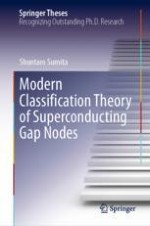2021 | OriginalPaper | Buchkapitel
2. Method
verfasst von : Dr. Shuntaro Sumita
Erschienen in: Modern Classification Theory of Superconducting Gap Nodes
Verlag: Springer Singapore
Aktivieren Sie unsere intelligente Suche, um passende Fachinhalte oder Patente zu finden.
Wählen Sie Textabschnitte aus um mit Künstlicher Intelligenz passenden Patente zu finden. powered by
Markieren Sie Textabschnitte, um KI-gestützt weitere passende Inhalte zu finden. powered by
